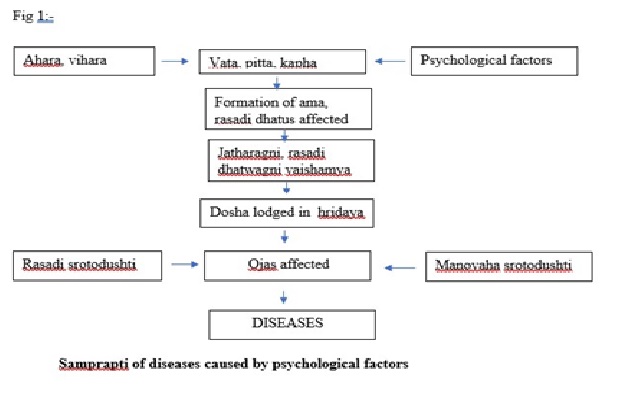Manasika bhavas and roga - A biopsychosocial model
Abstract
Ayurveda reiterates the relationship between the body and mind in its approach to health as well as illness. Though the vitiated doshas, dhatus and malas remain the physiological basis of illness, the illness itself is a more complex psychosomatic phenomenon. Ayurveda has followed biopsychosomatic approach where more emphasis is given to the aspect of integration body and mind. In somatic diseases the psychological aspect cannot be neglected, similarly in psychological diseases somatic affairs are given due consideration. Social factors also play a major role in the inter relationships, financial support etc. Modern medicine accepted the biopsychosocial approach towards health recently.
Manasika bhavas mentioned in Ayurveda such as bhaya, krodha, soka etc., can cause or aggravate several diseases and hence there is a relation between these bhavas and roga. These manasika bhavas act as stressors as it become the cause of several diseases. Body’s response to stress has been widely studied in the branch of Psychoneuroimmunology. Recent research suggests that the mind and body share bidirectional influences, and the science of Psychoneuroimmunology identifies specific mechanisms by which these mind-body changes are mediated. Hence it is important to consider psychological factors along with biological and social factors in all diseases, assess and identify them in a timely manner so as to have effective management.
Downloads

Copyright (c) 2022 International Journal of Ayurveda and Pharma Research

This work is licensed under a Creative Commons Attribution-NonCommercial-ShareAlike 4.0 International License.






